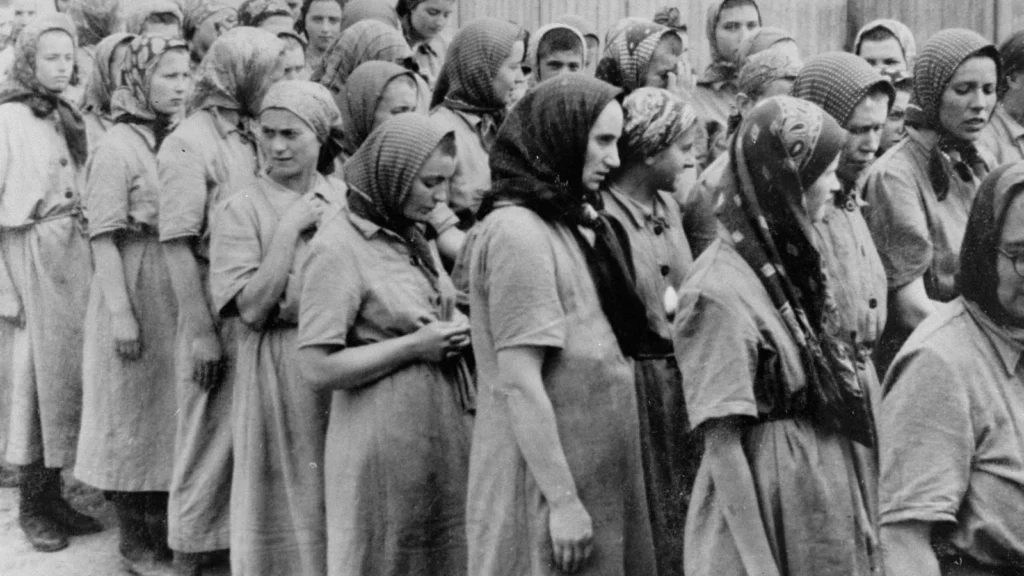The Impact of Pseudoscientific Ideas of Race on the Jewish Nation During the Period 1933 to 1946

The Impact of Pseudoscientific Ideas of Race on the Jewish Nation During the Period 1933 to 1946
In the turbulent years between 1933 and 1946, pseudoscientific ideas about race profoundly influenced societal attitudes, policies, and the lives of millions, particularly the Jewish community. This essay explores how these unfounded theories of racial superiority and inferiority underpinned the tragic events of the Holocaust and shaped the experiences of the Jewish people during this dark period in history.
Introduction
The period from 1933 to 1946 was marked by the rise of the Nazi regime in Germany, which championed pseudoscientific ideas of race to justify its ideologies and actions. These ideas were not just confined to Germany; they had a far-reaching impact on the Jewish nation, leading to unprecedented levels of persecution, discrimination, and the systematic attempt to eradicate an entire people. This article examines the influence of these racial theories and their devastating effects on the Jewish community.
Highlights
- Pseudoscientific Foundations: The Nazis leveraged the guise of scientific research to claim the superiority of the “Aryan” race and the inferiority of others, especially Jews. These claims were based on flawed methodologies and racial prejudices rather than empirical evidence.
- Legislation and Discrimination: Inspired by these pseudoscientific beliefs, the Nazi regime implemented a series of laws, such as the Nuremberg Laws of 1935, which institutionalized racial discrimination. Jews were stripped of their citizenship, banned from certain professions, and subjected to widespread social exclusion.
- Propaganda and Public Opinion: Nazi propaganda extensively used pseudoscientific rhetoric to dehumanize Jews and justify their persecution. This not only bolstered public support for anti-Semitic policies but also desensitized the populace to the regime’s escalating brutality.
- Impact on the Jewish Community: The Jewish nation suffered immensely under these policies. Beyond the catastrophic loss of life, the community faced profound cultural and psychological scars, many of which persist to this day.
Pseudoscientific Ideas of Race on the Jewish Nation During the Period 1933 to 1946
The influence of pseudoscientific ideas of race during the period 1933 to 1946 had a profound and devastating impact on the Jewish nation. These ideas, deeply rooted in Nazi ideology and eugenics, not only justified the persecution and extermination of Jews but also led to widespread legislative discrimination and the use of propaganda to manipulate public opinion. The consequences of these actions were catastrophic, culminating in the Holocaust and leaving lasting scars on the Jewish community.
Pseudoscientific Rationale

The Nazi regime’s pseudoscientific rationale for the persecution of Jews was grounded in a distorted interpretation of eugenics and racial purity. Eugenics, a theory that sought to improve the genetic quality of the human population, was perverted by the Nazis to assert the superiority of the “Aryan” race and the inferiority of others, particularly Jews. This misapplication of science falsely categorized Jews as a distinct and inferior race, purportedly justifying their exclusion from society and the need for their extermination. These claims were bolstered by manipulated data, flawed studies, and the outright dismissal of genuine scientific inquiry, creating a veneer of legitimacy for racial prejudices.
Examples include:
- Measurements and Classifications: The Nazis obsessively measured skull sizes, facial features, and other physical characteristics in an attempt to scientifically prove racial differences.
- Genetic Theories: They propagated the idea that Jews carried hereditary defects that could undermine the purity and health of the “Aryan” race.
Legislative Impact
The pseudoscientific justification of racial superiority led to the enactment of laws that systematically marginalized Jews and laid the groundwork for the Holocaust. The Nuremberg Laws of 1935 were particularly instrumental, stripping Jews of their citizenship and prohibiting marriage or sexual relations between Jews and non-Jewish Germans. These laws facilitated the seizure of Jewish property, forced sterilizations, and were a key step towards the establishment of ghettos and concentration camps.
Examples include:
- Property Seizures: Laws enabled the confiscation of Jewish businesses and assets, often transferring ownership to non-Jewish Germans.
- Forced Sterilization: Individuals deemed “racially inferior” were subjected to forced sterilizations under the Law for the Prevention of Hereditarily Diseased Offspring.
Role of Propaganda
Nazi propaganda was a powerful tool in dehumanizing Jews and painting them as the root of Germany’s problems. By continuously portraying Jews as subhuman and a threat to society, the regime fostered a climate of indifference and hostility that made it easier to carry out mass atrocities without significant public outcry. The use of media, including newspapers, films, and posters, ensured that these pseudoscientific ideas were embedded in the daily lives of Germans, normalizing the persecution and eventual extermination of Jews.
Examples include:
- Der Stürmer: A weekly newspaper that published virulently anti-Semitic content, including caricatures that depicted Jews as greedy, corrupt, and conspiratorial.
- Education System: School curricula and textbooks were revised to include racist ideologies, teaching children to view Jews as different and inferior.
Consequences for the Jewish Nation
The ultimate consequence of these pseudoscientific ideas was the Holocaust, the systematic murder of six million Jews. This genocide not only represented an unimaginable loss of life but also inflicted deep, enduring wounds on the Jewish community. Survivors and their descendants grapple with the loss of family, the destruction of their cultural heritage, and the trauma of the atrocities they witnessed or experienced.
Examples include:
- Cultural Loss: The destruction of synagogues, cemeteries, and cultural artifacts erased centuries of Jewish history and tradition.
- Psychological Impact: The survivors often suffered from psychological trauma, including post-traumatic stress disorder (PTSD), depression, and survivor’s guilt.
The pseudoscientific ideas of race promoted by the Nazi regime had catastrophic effects on the Jewish nation, demonstrating the dangerous power of racial ideologies when combined with state power. The legacy of this period underscores the importance of countering pseudoscience and promoting a society based on genuine scientific understanding and mutual respect for all individuals.
Conclusion
The impact of pseudoscientific ideas of race on the Jewish nation during 1933 to 1946 is a stark reminder of the dangers of allowing unfounded and biased theories to guide societal values and policies. The lessons from this period continue to be relevant, as they underscore the need for vigilance against racism and the importance of basing societal decisions on sound scientific principles. The resilience of the Jewish community in the face of such adversity is a powerful testament to the human spirit’s capacity to overcome even the darkest chapters of history.
